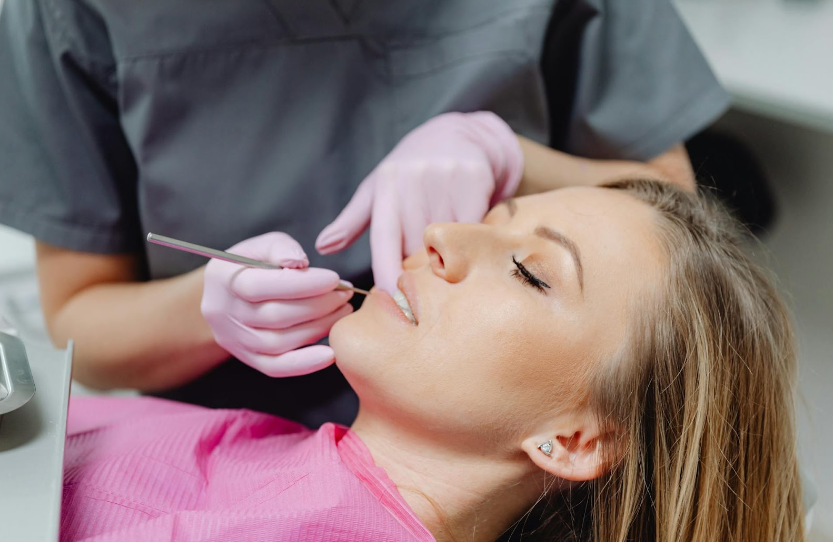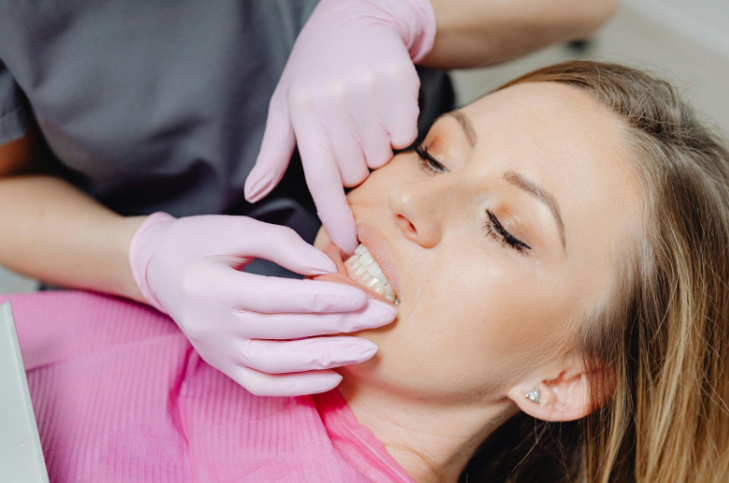Understanding the Causes and Solutions of Tooth Gaps
Understanding the Causes and Solutions of Tooth Gaps

Tooth gaps are a common dental concern affecting individuals of all ages. While some may assume their tooth gaps are unique, others may seek treatment to address cosmetic or functional issues. If you have a gap after all, you’re sure to be well aware of how annoying it is to get food stuck in your gap, and how difficult it can be to keep the gap clean!
Read on to explore the causes, symptoms, diagnosis, treatment options, and preventive measures related to tooth gaps.
What Is a Tooth Gap?
A tooth gap, otherwise known as a diastema, is a space between teeth, often noticeable between the upper front teeth. Temporary tooth gaps during the transition from baby to adult teeth are common in children and usually resolve naturally. However, significant gaps may require intervention.
Understanding tooth gaps and their causes is necessary for individuals seeking to enhance their smile and maintain oral health. By consulting with dental professionals, personalized treatment plans can be developed to achieve desired outcomes effectively.
Causes of Tooth Gaps
Tooth gaps can be caused by several factors, including:
- Genetics: The size of teeth and jawbone structure can be inherited traits. Individuals with smaller teeth or a more prominent jawbone may be more prone to developing gaps between their teeth.
- Extra Teeth in the Jawbone: Extra teeth can prevent others from growing properly, causing gaps. Minor surgery can correct this issue.
- Missing Teeth: If you have missing teeth (like with hypodontia), gaps may form as the remaining teeth shift.
- Oversized Labial Frenum: The labial frenum, the tissue connecting the inside of the upper lip to the gum above the front teeth, can be unusually large, leading to a gap between the front teeth.
- Habits: Habits such as thumb sucking, lip sucking, or tongue thrusting can exert pressure on the front teeth, causing them to shift forward and create gaps.
- Gum Disease: Advanced gum disease, also known as periodontitis, can result in tooth migration and ultimately lead to gaps between teeth as the supporting bone deteriorates.
- Excessive Gum Tissue: Some people have extra gum tissue extending between teeth. If this tissue grows too much, it can push the teeth apart, commonly affecting the upper front teeth.
Symptoms of Tooth Gaps
The primary symptom of tooth gaps is a visible space between teeth, most commonly observed between the upper front teeth. In cases where gum disease is present, individuals may experience additional symptoms such as:
- Wide gaps between teeth
- Swollen and tender gums
- Receding gums
- Bleeding gums
- Bright red gums
- Bad breath
- Loose teeth
- Extreme tooth pain
Diagnosis of Tooth Gaps
Diagnosing tooth gaps typically involves a visual examination by a dentist or orthodontist. In some cases, dental X-rays may be recommended to assess the underlying bone structure and identify any contributing factors.
Treatment Options for Tooth Gaps
Treatment for tooth gaps depends on the severity and causes of the gap and patient preferences. Standard treatment options include:
Braces
Traditional braces are often used to gradually close gaps between teeth by applying continuous pressure to move the teeth into alignment. This method is particularly effective for closing more significant gaps and addressing issues with overall tooth alignment.
Invisalign
Invisalign offers a discreet alternative to traditional braces for mild to moderate cases of tooth gaps. Clear aligner trays are custom-made to fit comfortably over the teeth and gradually shift them into the desired position.
Veneers or Bonding
Bonding may be recommended for individuals seeking a cosmetic solution to minor tooth gaps. Veneers are thin porcelain or composite resin shells bonded to the teeth' front surface to improve their appearance and close gaps. Dental bonding involves applying a tooth-colored resin material to the teeth and sculpting it to fill gaps.
Dental Implants or Bridges
In cases where tooth gaps are caused by missing teeth, dental implants may be necessary to restore the appearance. Bridges involve surgically placing artificial tooth roots into the jawbone, while bridges consist of prosthetic teeth anchored to adjacent natural teeth.
Surgery
In instances where a large or excessive labial frenum is contributing to the gap between front teeth, a surgical procedure known as a frenectomy may be performed to remove the excess tissue and allow the teeth to move closer together naturally.
Gum Disease Treatments for Diastema
If your diastema is due to gum disease, periodontal treatment is necessary first to eliminate harmful bacteria. After addressing the infection, you can consider cosmetic treatments for the gap.
Common gum treatments include:
- Scaling and Root Planing: This deep cleaning procedure removes bacteria under the gums for mild gum disease, often requiring local anesthesia.
- Gingival Flap Surgery: For more severe gum disease, this surgery involves lifting the gums to clean the teeth roots and repositioning the gums. If there's bone loss, a dental bone graft may be placed to regenerate bone tissue.
Preventive Measures for Tooth Gaps
While some causes of tooth gaps, such as genetics, cannot be prevented, specific safety measures can help maintain oral health and reduce the risk of developing gaps between teeth:
Practice Good Oral Hygiene
Brushing teeth twice daily, flossing regularly, and attending routine dental check-ups can help prevent gum disease and tooth decay, which can potentially contribute to tooth gaps.
Avoid Habits That Exert Pressure on Teeth
Preventing habits like thumb sucking, lip sucking, or tongue thrusting in children can help prevent the development of tooth gaps by minimizing improper pressure on the teeth.
Seek Early Orthodontic Evaluation
The American Association of Orthodontists recommends that children undergo an orthodontic evaluation by age 7 to identify any potential issues with tooth alignment or jaw development early on.
Tooth gaps can have various causes and may require different treatment approaches depending on individual factors. Whether seeking treatment for cosmetic reasons or addressing functional concerns, consulting with a dentist or orthodontist is best to determine the most suitable treatment plan.
Patriot Family Dental can help restore your smile by diagnosing and treating teeth gaps.
Schedule your appointment to learn more.











